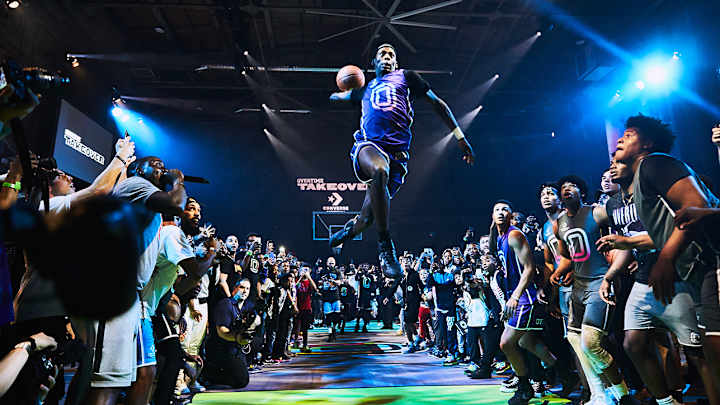Seeking Young Fans, Overtime Just Changed Basketball—Literally

ESPN debuted its first teen-focused broadcast during this year’s NBA Finals. Watching Katie Nolan and Jay Williams break down the game with pizza on hand, however, brought more questions than answers. Half of Gen Z now has stronger connections with “non-traditional sports” outside of the big five, and what if luring them back to basketball and football requires more than refreshing the voices calling the game or adding high-tech on-screen graphics? What if the leagues need to change as much as the media? What if it’s not about shaving 15 minutes off their games but chopping contests to 15 minutes total, or not even showing them live at all?
For now three-hour appointment-viewing sporting events remain pop culture anchors, with decades of dominance ahead. But sports were radically different before the TV era, so what might they look like after it’s over? One digitally native sports network was also asking those questions this spring, but its answers were starkly different than ESPN’s experiment.
Primarily filming viral high school athletes for teen audiences, Overtime garners nearly one billion views per month across its social channels, with funders ranging from Silicon Valley standby Andreessen Horowitz to former NBA commissioner David Stern. Now in its third year, the company decided to change the game—literally.
For an Overtime event in New York featuring high school boys and girls, switching to 3-on-3 and shrinking the court would be the smallest tweaks made to James Naismith’s game. The so-called “Overtime Rules” swapped out free throws for one-on-one duels, got rid of taking the ball out after a made basket, and set fans around the edge of the court, eliminating out-of-bounds altogether. Matchups consisted of four four-minute quarters, with a substitution only allowed between periods. As for Overtime Rules’s overtime rule? Sudden death.
“We have a complete sandbox,” Overtime founders Dan Porter and Zack Weiner would tell their team. “We can rewrite the rules for the digital generation.” Porter relied on the design skills he honed while building a $200 million mobile gaming company. The result was near constant action, buttressed by special lighting effects—AND1 hoops for a new generation. But unless you were in a Brooklyn Warehouse on the right May Saturday, all you’ve seen from the tournament have been selected snippets.
Rather than live stream the games, Overtime decided to keep the results under wraps until it unveils a highly edited, stylized film capturing the entire weekend Wednesday on YouTube. The “movie” runs about half-an-hour, because evidently this generation likes its games and its movies to be shorter than their yoga classes. Following the athletes throughout the weekend, the show shares more in common with 1990s skate videos than modern SportsCenter highlights. That’s in line with Overtime’s attempt to compare itself to Thrasher Magazine as much as ESPN.
“Based off our current knowledge, I would be hesitant to do a live stream,” Weiner said. “If you look at the ratings for professional sports leagues, the average age of every single league is going up and up…. I think that you’re going to get more kids and more engagement if you’re not doing it live and you’re telling it in a story format and you’re putting out highlights and giving it to them the way they want it.”
Of course, that condensed, delayed offering limits the number of possible advertisements and eliminates the national edge-of-your-seat communal experience that draws millions every year. But if it’s the way a generation wants to watch sports, someone will provide it to them. And it helps that for now, Overtime doesn’t pay its stars so as not to jeopardize their school eligibility.
Weiner didn’t provide details regarding what’s next for the format his company has developed, but he did say he thought there was room for an entire league catering to Overtime’s core consumer.
“I think there’s this misconception that kids won’t watch more than 15 seconds. That’s not true. Like they’ll watch Netflix shows,” Weiner said. “But … they don’t really want to sit there for three hours and watch an NBA game or the Super Bowl. So even if you just at a macro level think about those factors: kids love sports, but they’re not really watching the main product that every sports media company is focused on, I mean, that’s sort of where we started, right?”
“There’s something intriguing about creating a league from the ground up where you own all the IP,” he added. “I think, yeah, I think there’s an opportunity.”
